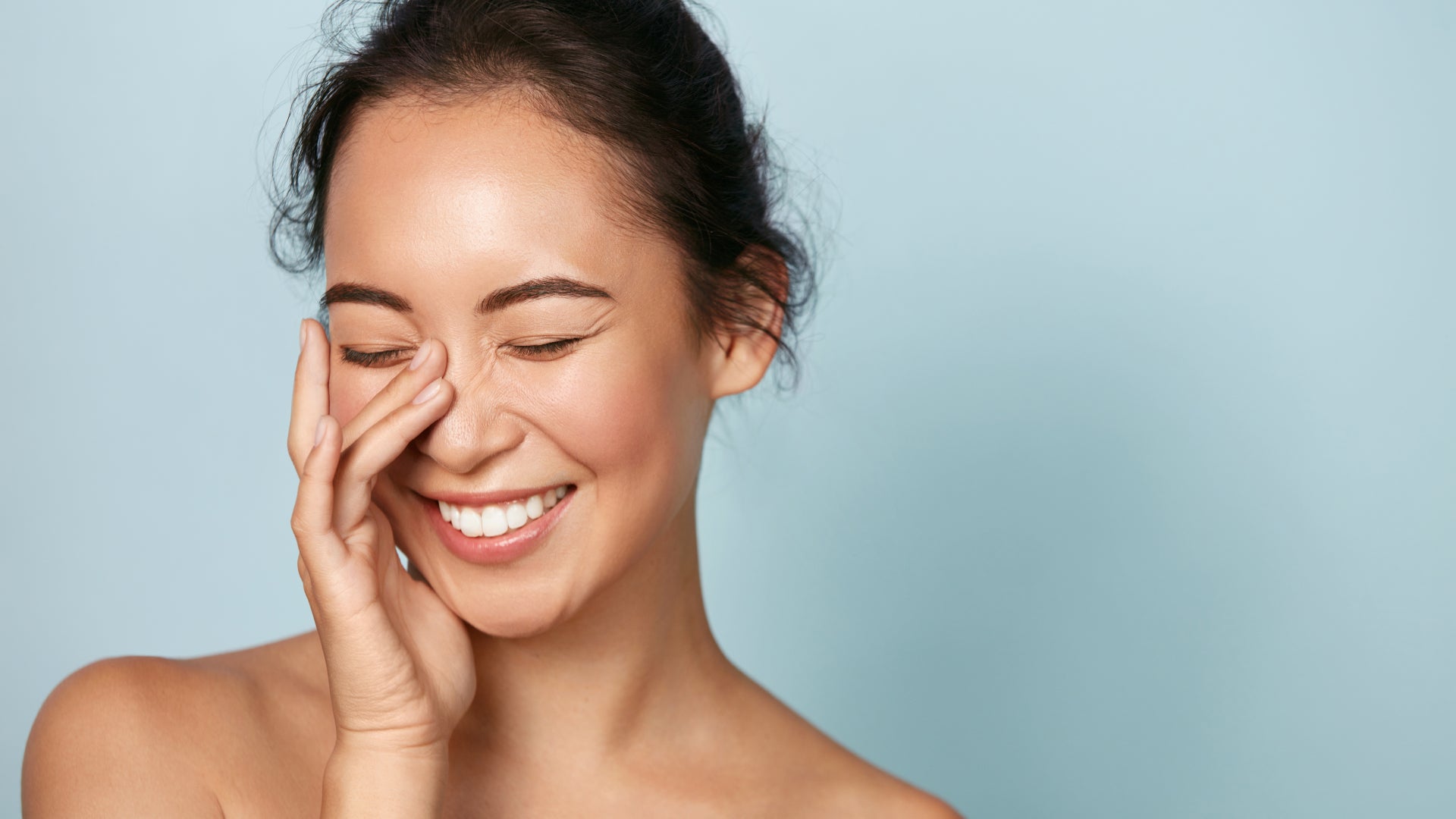
Why Patch Testing Skincare Is Everything
Testing a new beauty product before applying it all over your skin or hair can seem like a real chore. But tell us this: would you ever jump straight into a hot bath without dipping your toe in the water first? No chance. So, why are you on board with patch testing hair color, but not skincare? It’s definitely time to changed that…
We recently read a sad story about a young woman who used an at-home peeling solution for the first time and ended up with terrible blisters all over her chin. She performed what she thought was an adequate test by applying a little of the formulation to her cheek for five minutes. Then, because she felt no adverse reaction, she went for it.
Big mistake. Huge. She paid the price the next day with burning skin that turned into nasty red bumps. The following day, these bumps turned into blisters. The next day they continued to worsen. And for many weeks following.
This made us think, just how important proper patch testing is. And that most consumers know little about it, let alone the reasons why they should be doing it after purchasing any new skincare product.
So, here’s everything you need to know about how and why your skin can react to certain ingredients in skincare – and what you can do to avoid it.
The Truth About What Goes In Your Skincare
When it comes to skincare ingredients, manufacturers like us are very strict about testing everything that goes into our product formulas. We are, after all, responsible for ensuring every product is safe for consumer use when used correctly and according to its directions.
However, the worrying truth is that, other than color additives, cosmetic ingredients do not have to be tested or approved by the FDA (US Food and Drug Administration) before going to market. They’re regulated, yes, and there’s plenty of research and data online about how effective and safe most ingredients are, but the FDA has no authority over any cosmetic product you put on your face and body.
Due to the strength, power and concentration of our active, plant-based formulations, we take this very seriously and thoroughly test everything before including it in our products. But still, you can’t be sure every brand has the same high standards.
Red flag number one.
How Your Own Skin Comes Into Play
Another important thing to remember is that your skin is totally unique to you. So, while the latest influencer, glossy magazine beauty editor or Love Island star might get all the feels from a much-hyped skincare product, who’s to say that your skin will behave in the exact same way?
Similarly, you may think your skin is as strong as steel and can take anything you throw at it: retinol, vitamin C, glycolic acid, the works. Well, this might be true, but whether you have sensitive skin or not, there’s always the possibility of reacting to a certain active ingredient in skincare. And here’s the kicker. People can develop allergies at any time in their lives, so even if you’ve used an ingredient before, it may still cause your skin to flare-up at a later date.
Red flag number two.
So, What Can You Do To Prevent Skin Irritation?
First up it’s vital, we repeat vital to only ever buy products from brands you trust. Once you’ve got this in your head, you can then think in more detail about what your put on your face.
One of the biggest mistakes you could make is to overload your skin with countless products containing strong actives. Word of warning: unless these actives have been carefully combined into one treatment by a reputable manufacturer, or you’ve been prescribed a curated regimen by a board-certified skin expert, this is a bad idea. Instead, introduce active ingredients one at a time, giving yourself a few weeks to acclimate before starting another. You could also try an antioxidant such as vitamin E in the morning, then an AHA or retinol treatment at night to get the benefits of both while keeping them separate and reducing your chances of irritation.
Another trick is to check the labels before you buy a new product and try to avoid some of the most common irritants in skincare such as parabens, formaldehyde and sulfates.
The best way to avoid unwanted flare-ups, however, is to carry out a patch test first.
How To Perform A Patch Test At Home
Patch tests are a piece of cake. All you need to do is apply a small dot of your new product to a discreet patch of clean skin such as behind your ears, inside your elbow, on the side of your neck or on your wrist.
Skin can take up to 48 hours to react to a product or ingredient it doesn’t like, so you should ideally leave the product for at least 24 hours (preferably 48) before checking for a negative reaction. If you see or feel anything that doesn’t look right after this time such as redness, burning, swelling or itching, discontinue use and return it because something’s not right. And should symptoms continue or worsen, seek advice from a board-certified skincare expert.
Any mild reaction such as slight redness or tingling that occurs within the first hour of applying your product is fine – it’s the intention of most active ingredients, especially AHAs and BHAs, to work out the skin. This should settle down within 30-60 minutes, but if it continues or gets worse, rinse your skin immediately.
If you experience no adverse reactions over the 24-48 hour time period, you should be good to apply the product to your skin as instructed. But remember, those directions are there for a reason, so stick with them. To the letter.
What To Do If You Discover A Skin Allergy
If you’re concerned about a serious reaction and think you might have some kind of allergy such as contact dermatitis, make sure to book an appointment with a board-certified dermatologist or allergist. Chances are, you’re allergic to a certain ingredient which can be diagnosed through a more detailed type of patch testing.
Patch testing at the doctor’s office is a whole different ball game and involves having a number of small patches of allergens applied to the skin and observed for adverse reactions. During this test, your skin may be exposed to up to 30 different substances at once, so it’s a great way to eliminate certain chemicals and ingredients from both your skincare and household products.
Remember, knowledge is a powerful thing and can be a lifesaver for your skin.















